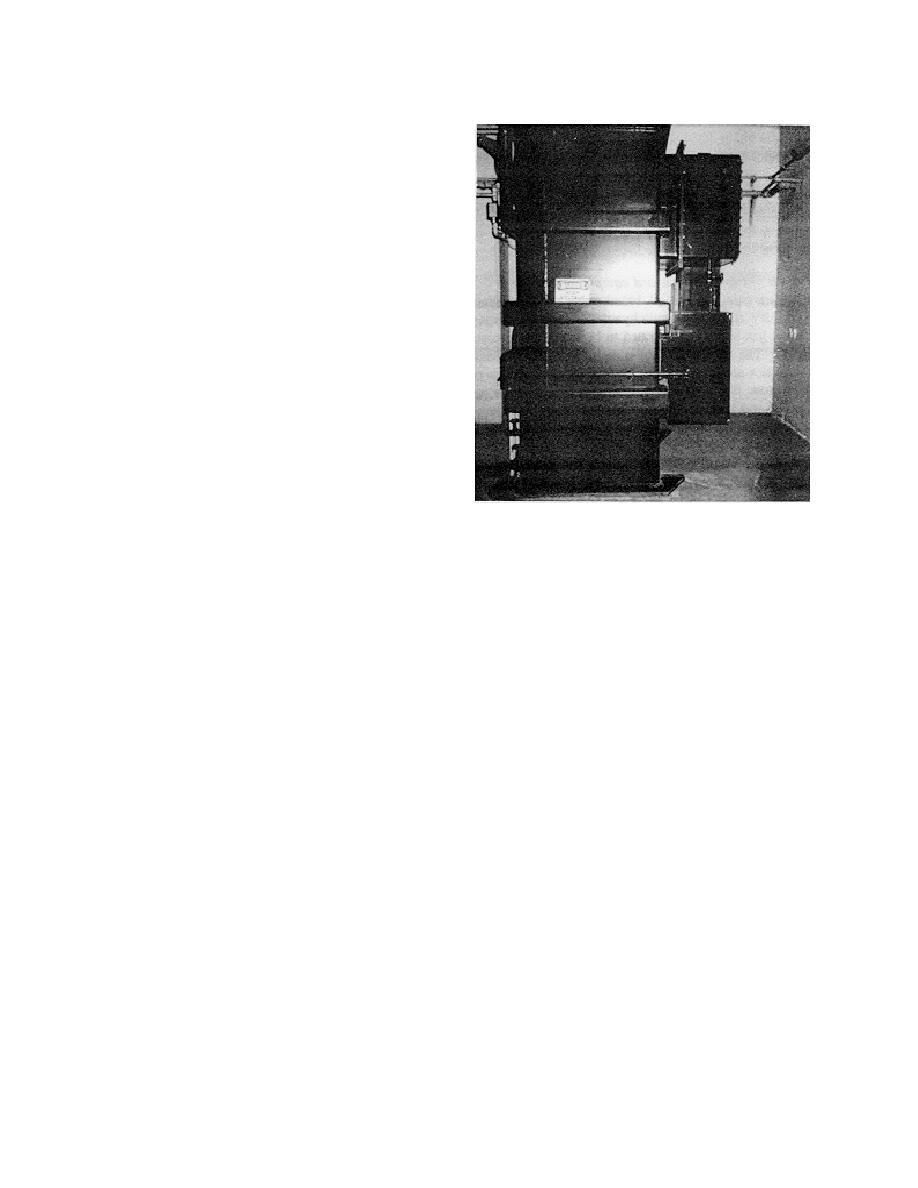
ETL 1110-2-533
30 Sep 94
B-5. Systems Needed for the Continued
Operation of Dams
The following systems have been listed in the order
of their vulnerability, taking into account their impor-
tance to continued system operation and ease of
implementing mitigation measures.
a.
Normal house power.
(1) House power, or station power, is usually
supplied from several sources. Power is usually
supplied at voltages of 2 kV or above and passes
through a unit substation to supply 480 V for motors
and distribution panels. House power is needed for
continued operation of the dam.
(2) All components including transformers pro-
viding house power and units substations should be
anchored taking into account both strength and flexi-
bility. Frequently, transformers providing house
power are not anchored (Figure B-18). Transformers
should be prevented from sliding and tipping. Some
units can be tall and exert large overtuning moments.
Figure B-18. House power transformers are fre-
Frequently these units in dams are surrounded by
quently unanchored
structural walls so that restraints placed at the base
and bracing to walls near the top of the unit can
placed near the side walls of cabinets because the
provide adequate seismic protection. Of particular
side wall acts as a diaphragm and provides much of
concern, because the anchorage is concealed, are
the stiffness of the cabinet. The load path between
certain dry-type transformers in which some man-
the wall and the anchor should be kept both strong
ufacturers do not positively anchor the transformer
and stiff. Anchors through folded sheet metal that
coil to its cabinet.
form the cabinet framing at the bottom must be
anchored near the wall and should have heavy
(3) Older medium and low voltage switchgears
washers or back-up plates under the washers to pre-
typically have much more substantial cabinets as
vent the bolts from tearing the sheet metal. Welds
compared with the same types of equipment pur-
along inside edges of sheet metal framing and the use
chased today. For new equipment, the strength and
of puddle welds in bolt holes should be avoided.
flexibility of the cabinet, particularly in the areas near
Low and medium voltage switchgear tends to be quite
anchor bolts, should be checked. It is generally diffi-
deep so that overturning moments are relatively
cult to install anchorage on existing equipment of this
small. Motor control centers are typically 20 in. deep
type because it is difficult to move the cabinets, and
and 90 in. high so that substantial overturning
cables in the bottom of cabinets can make it difficult
moments can be applied to the anchorage. Some
to even check anchorage, much less install new
instrument cabinets can also be very shallow.
anchors if needed. Figure B-13 illustrates a retrofit
method for this type of equipment, and para-
(5) All power equipment needed to operate the
graph B-4f discusses other anchorage issues. The use
turbine, such as equipment needed for field excitation,
of bracing to the top of cabinets to reduce base
should be anchored.
anchorage requirements is another alternative.
(6) When house power turbines are not part of
(4) Rather than in the center of the front and
the dam's power configuration, house power is
B-13



 Previous Page
Previous Page
